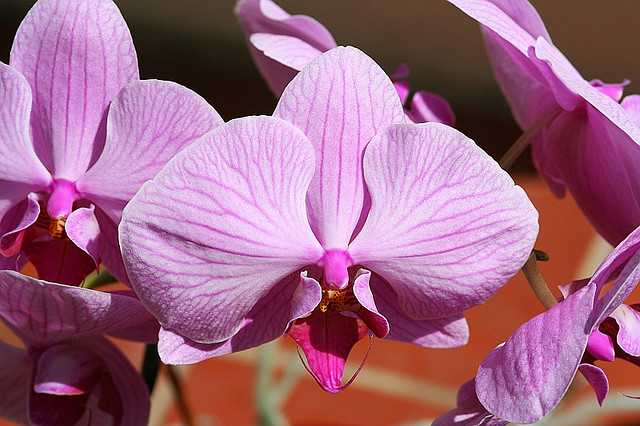
Now an affordable luxury, orchids are some of the most commonly grown houseplants. It’s not hard to learn how to take care of orchid plants, if they’re provided with proper growing conditions. Orchids’ long-lasting and sensational blooms bring a touch of elegance to any greenhouse or home. You can choose exciting varieties to grow on yourself with the wide range of young orchid plants now available at local garden centers and florists. In this article we will tell you everything you need to know about growing your own orchids.
Unlike Swedish ivy, palms and philodendrons, orchids don’t grow in soil. In fact, one of the best ways to kill orchid is to put it in soil. Most orchids in the nature are not rooted in the ground, but rather attached to the sides of trees and on branches with thick roots. The plants absorb nutrients and water from the rain and air and whatever drips down the tree. Orchids are adapted to surviving when there is no rain, hoarding water in thick roots, stems and leaves.
Watering
Homegrown orchids are usually grown in pots filled with chips of bark, stones or some other loosely packed material, which permits water to drain quickly and keeps roots well-aerated. Letting an orchid sit in a water-logged pot is a way to kill it, because a lack of oxygen will cause the rotting and suffocation of the roots. Water orchids thoroughly about once a week, allow them to dry slightly, and then water them again.
Temperature
One of the biggest differences between many houseplants and orchids is that in nature most orchids experience a big difference in temperatures during the day and night. Therefore, it is important that you manipulate the temperature of the home so it will drop at least ten degrees at night. This is especially important in autumn and winter when many orchids initiate buds. You can easily achieve this by lowering the temperature on your thermostat. This shouldn’t be hard and it can mean the difference between an orchid plant which thrives and flowers, and one that merely lives.
Light
Most orchids require plenty of light during a day, preferably at least 6 hours. Many orchids can withstand more or less than the amount of recommended light. However, keep in mind that inadequate light prevents them from flowering, even though they’ll grow. The color of the leaves indicates if the amount of light is adequate. A grassy green color means the plant is receiving sufficient light to bloom. Dark green leaves signal there is not enough light. The lush, rich, dark green color is not desirable in orchid leaves. Move plants toward or away from the window to manipulate the amount of light.
Fertilizing
Orchids don’t need abundant doses of fertilizer. However, you should apply a weak solution of 20-10-20 fertilizer once a week to see blooms on a regular basis and maintain healthy plants. At the end of each month, wash out with plain water any accumulated fertilizer salts. Whenever you are applying the fertilizer give less rather than more when you’re in doubt. In the autumn, switch to a blossom-booster fertilizer, when many plants are initiating flower buds.
This fertilizer contains lower amounts of nitrogen and higher of phosphorus, such as a 10-30-20 formula. Orchids fill a flowerless void in the drabbest of months, because they are winter bloomers and this makes them even more special as houseplants. Usually, peak of orchid bloom occurs between December and April.
Humidity
Adequate humidity is one of the things orchids greatly appreciate. Orchids require humidity of 50% or more, but the atmosphere in most homes is far below that. If you rise the humidity around, it will result in better flowering of orchids. One of the best ways to increase humidity is to operate a humidifier near the plants.



